In photos: Annular solar eclipse 2024 delights with stunning 'ring of fire' display
Here are some of the best photos of the 2024 annular solar eclipse as it traveled over Easter Island and South America. The "ring of fire" put on an incredible show.
On Oct. 2, an annular solar eclipse swept across parts of the Pacific Ocean, southern Chile and southern Argentina, putting on a dramatic display and turning the sun into a "ring of fire."
Only about 175,000 people live within the path of annularity — the 165-mile- to 206-mile-wide (265-kilometer- to 331-kilometer-wide) route along which moon covered up to about 93% of the sun's disk — making the "ring of fire" a rather rare sight to behold. Here we explore some of the best photos of the annular solar eclipse coming from skywatchers who caught a glimpse of the spectacular ring of fire as well as those who saw the moon take a "bite" out of the sun during the partial eclipse phase.
Related: Annular solar eclipse 2024 wows skywatchers with 'ring of fire' over Easter Island, South America
During a solar eclipse, the moon passes between the sun and Earth and casts a shadow on our planet. As the moon's orbit around Earth is slightly elliptical, sometimes the moon is closer to us (known as perigee) and sometimes it is farther away (known as apogee). An annular eclipse occurs when the moon is at apogee, meaning appears slightly smaller than usual and therefore does not fully cover the sun's disk. As such, we are left with an impressive "ring of fire."
Award-winning photographer Josh Dury traveled to Rapa Nui (Easter Island) for the annular solar eclipse and captured a truly breathtaking composite image.
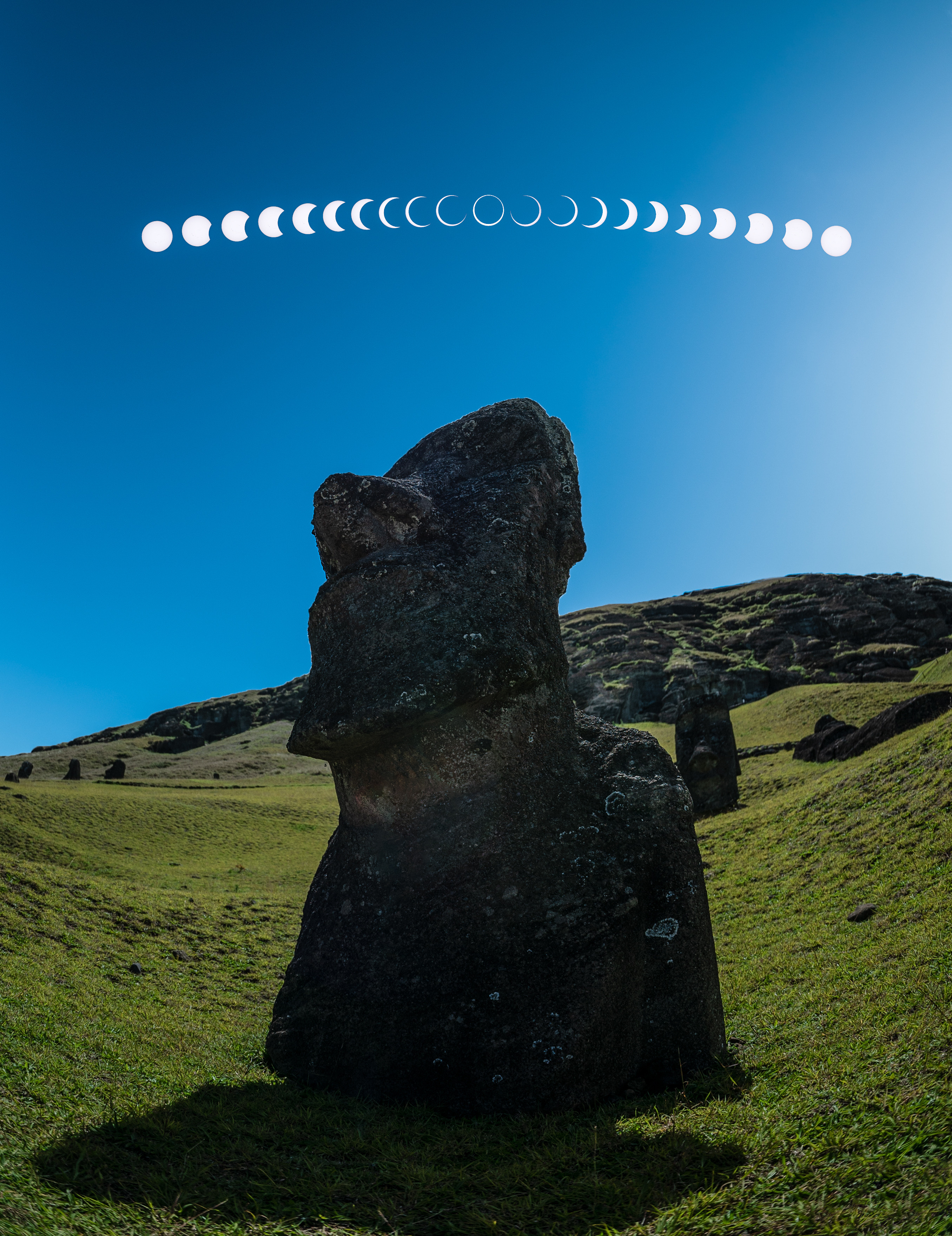
"I am overwhelmed to experience this eclipse with Martín Tuki, our guide and descendant of the island, and my mum. That's a wrap for 312 years," Dury told Space.com.
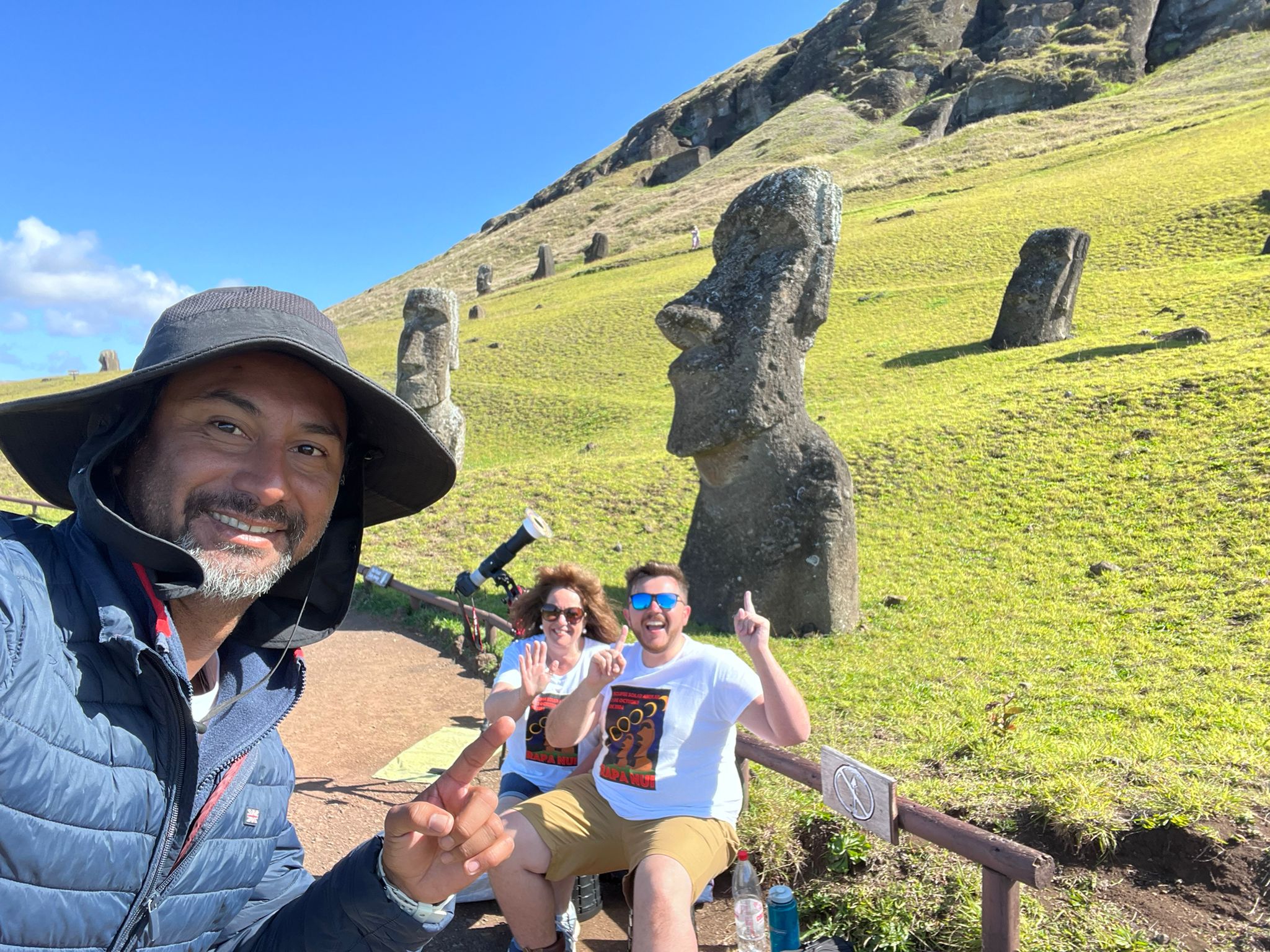
Eclipse expert and Space.com contributor Jamie Carter also headed to Rapa Nui for the annular solar eclipse. Carter sent us some jaw-dropping close-up views of the sun during the event.
Get the Space.com Newsletter
Breaking space news, the latest updates on rocket launches, skywatching events and more!
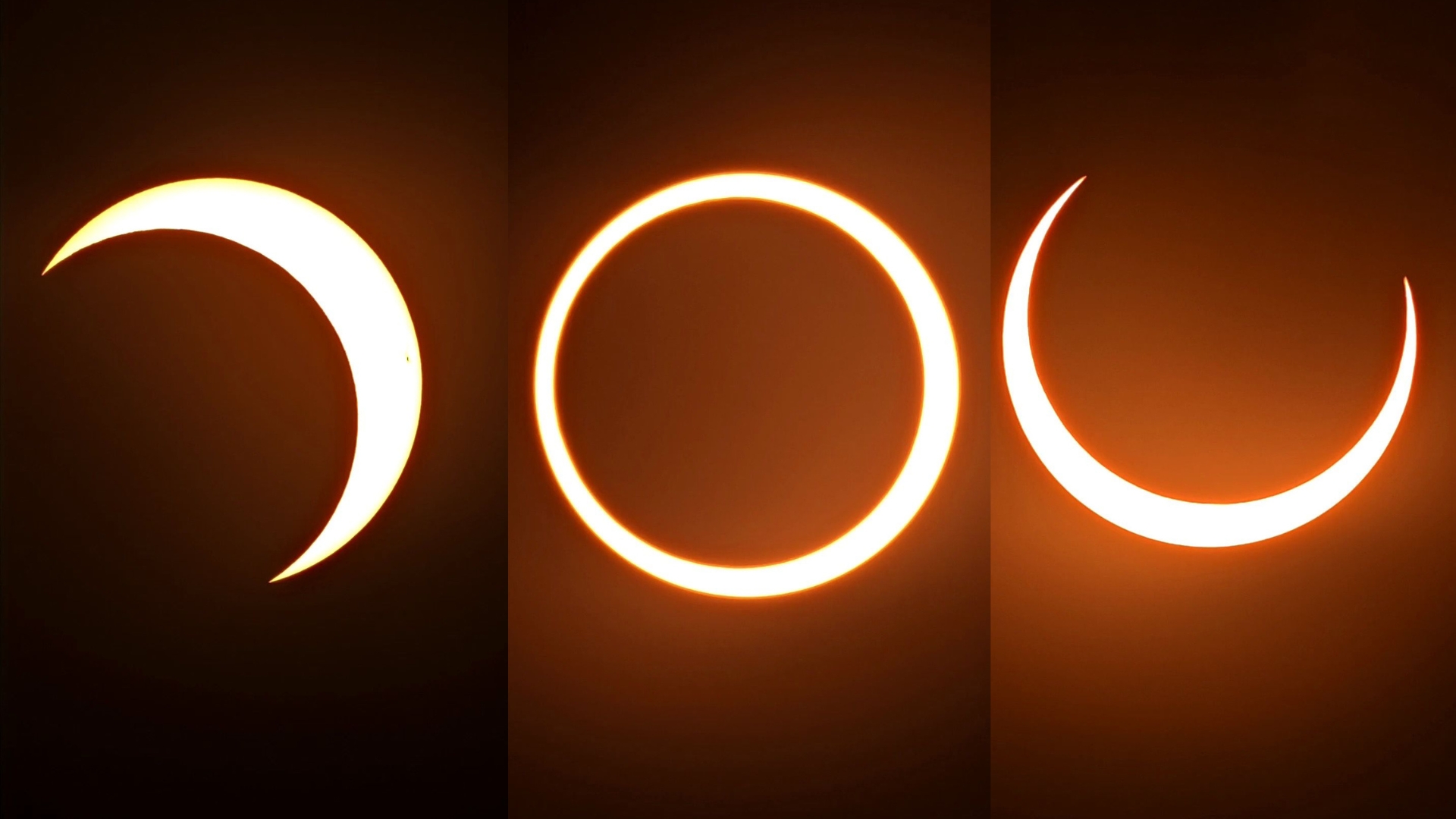
In the partial phase, you can also make out sunspots which are dark, planet-size regions of strong magnetic fields on the surface of the sun. They can spawn eruptive disturbances such as solar flares and coronal mass ejections (CMEs).
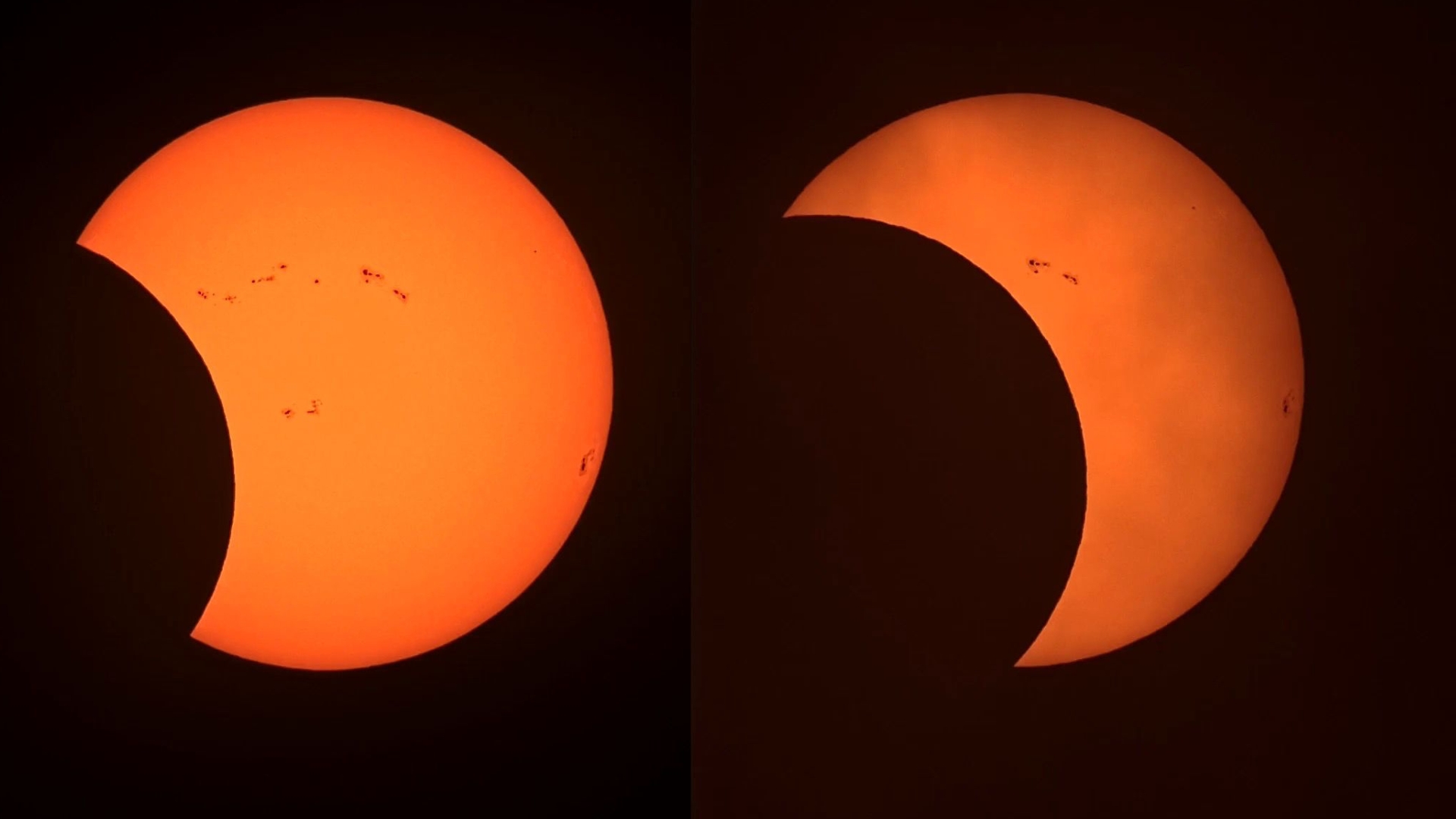
"Well, that was incredible. The tension! A cloud left the sun just 10 seconds before the Baily's beads appeared, and another appeared a minute after the ring ended. We were so lucky," Carter told Space.com.
"It felt incredible to actually see the ring, knowing I had no more than a 50-50 chance. It was so cold in the minutes before annularity," Carter added.
Photographer Jonathan Martins captured the entire sequence of the annular solar eclipse from Rapa Nui in the Pacific Ocean.

Photographer Juan Mabromata captured the "ring of fire" from Puerto San Julian, Santa Cruz Province, Argentina.
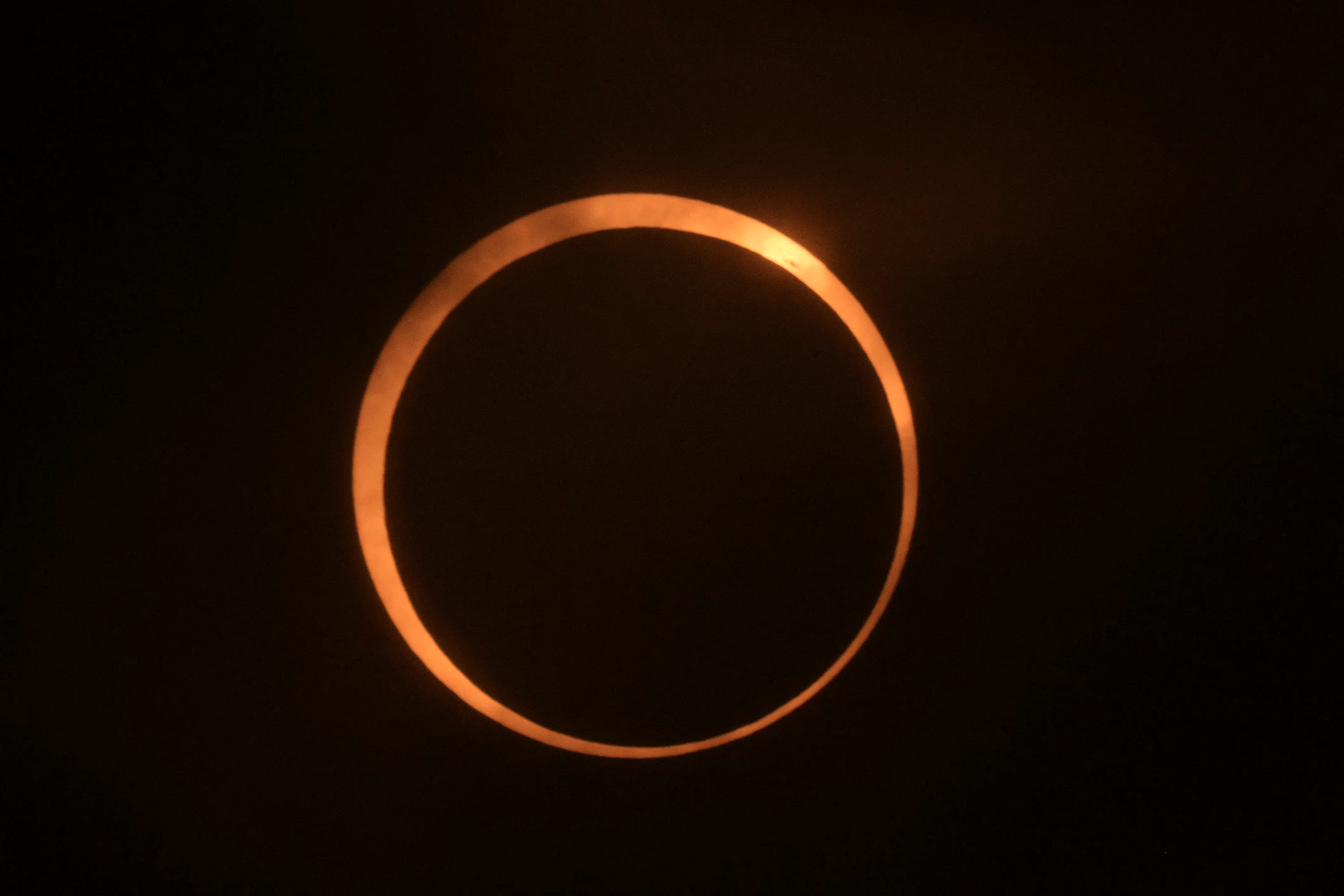
Mabromata also captured the moment before the ring was fully complete, creating what some refer to as "devil horns." Such a dramatic scene is visible when the moon is yet to pass entirely in front of the solar disk.
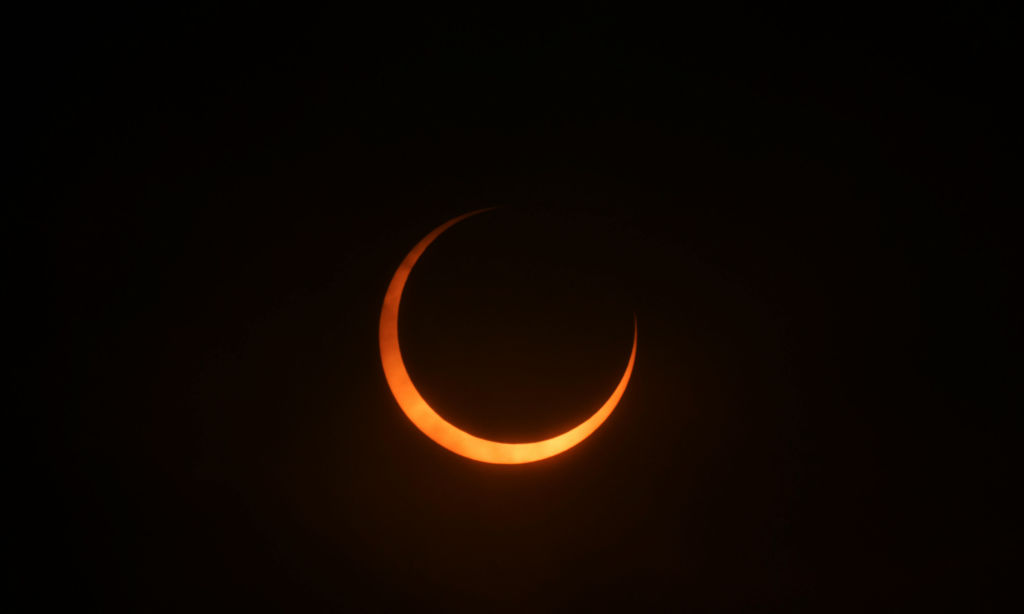
Of course, you should never look at the sun without adequate protection. And during the annular solar eclipse people got very creative when making their own solar viewing equipment. Here, we can see crowds gathered in Puerto San Julian, Santa Cruz province, Argentina, waiting for the event to unfold.
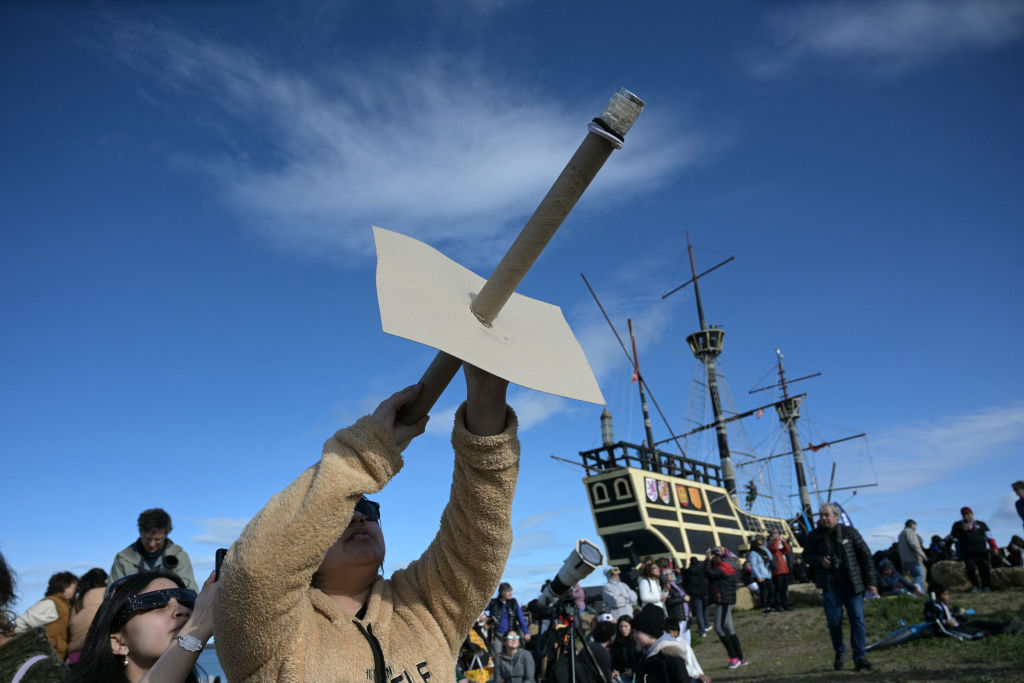
Sometimes, a view of a partial solar eclipse can be almost as dramatic as the complete "ring of fire." Photographer Luis Robayo captured this striking image of the partial phase behind the Angels monument at the National Congress building in Buenos Aires on Oct. 2.
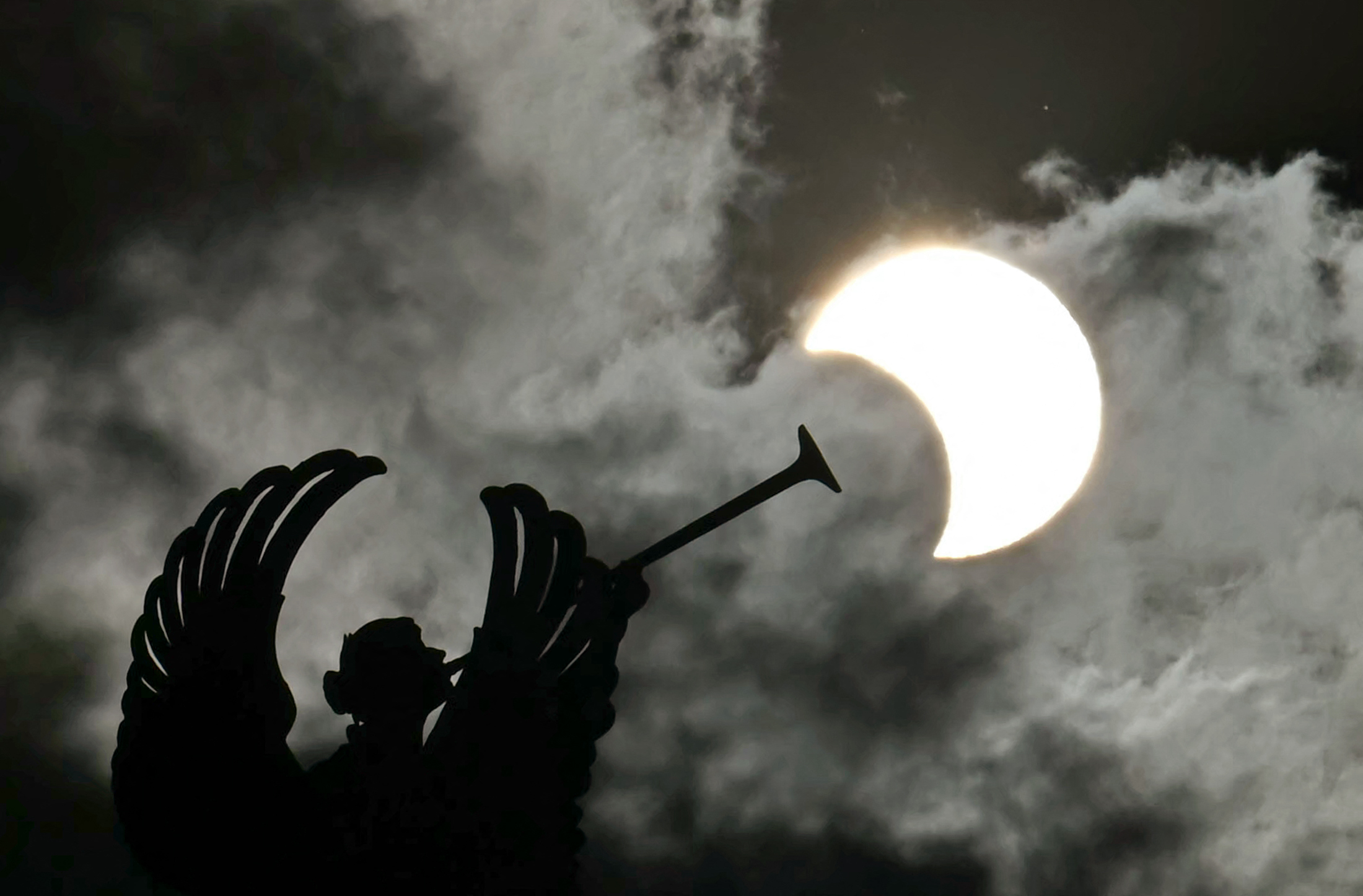
Another of Robayo's partial eclipse images was photobombed by a bird.
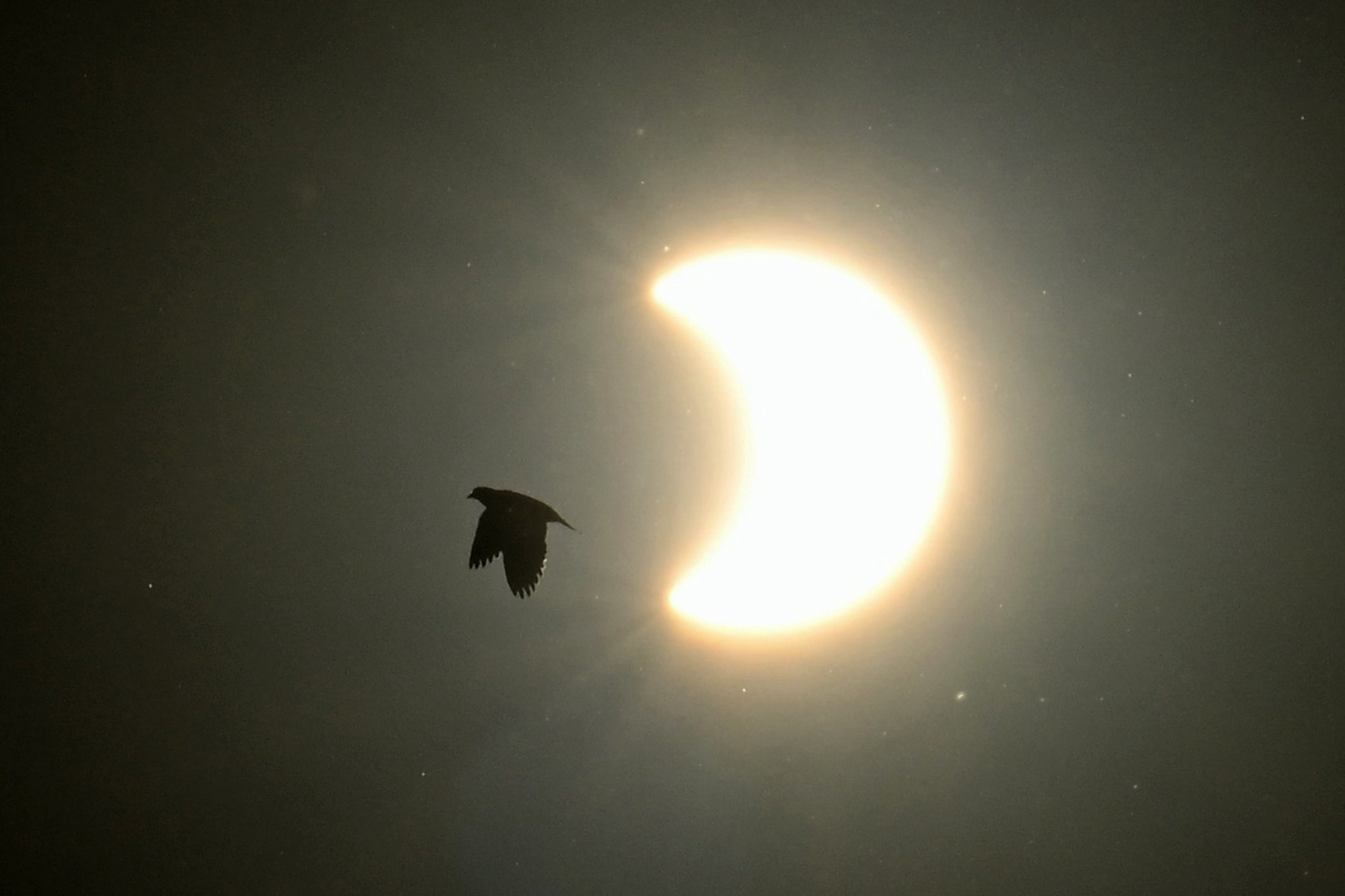
A solar eclipse can be an emotional time for those who experience the phenomenon in person. In this next photo, captured by Juan Mabromata, astronomy enthusiasts embrace each other during the annular solar eclipse in Puerto San Julian, Santa Cruz province, Argentina.
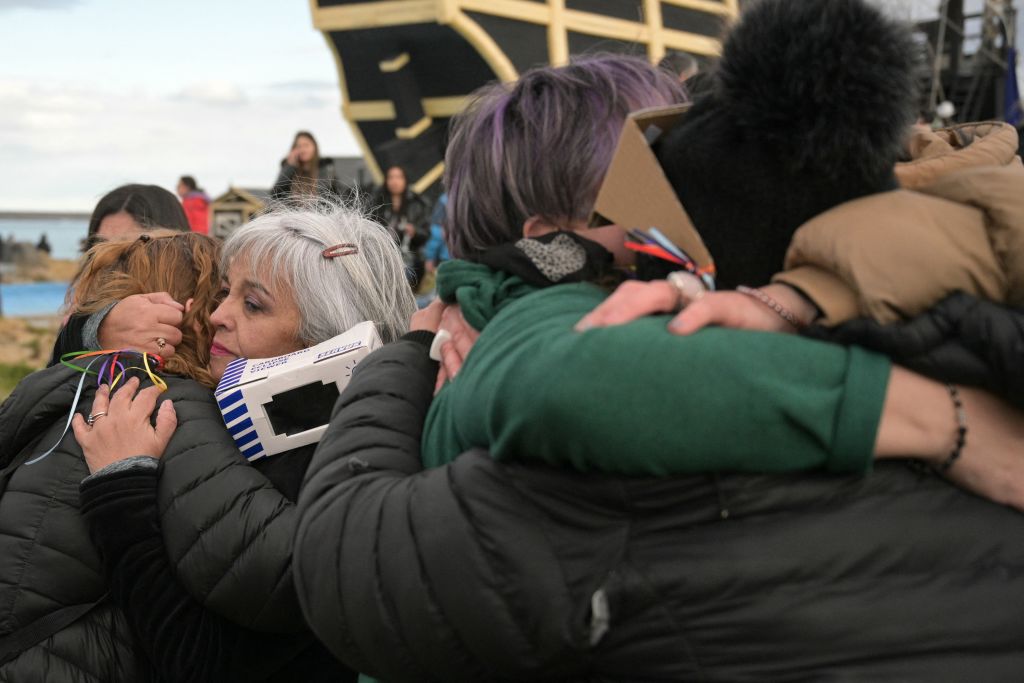
Photographer Matias Baglietto captured this striking image from Buenos Aires, Argentina, during the partial eclipse phase on Oct. 2.
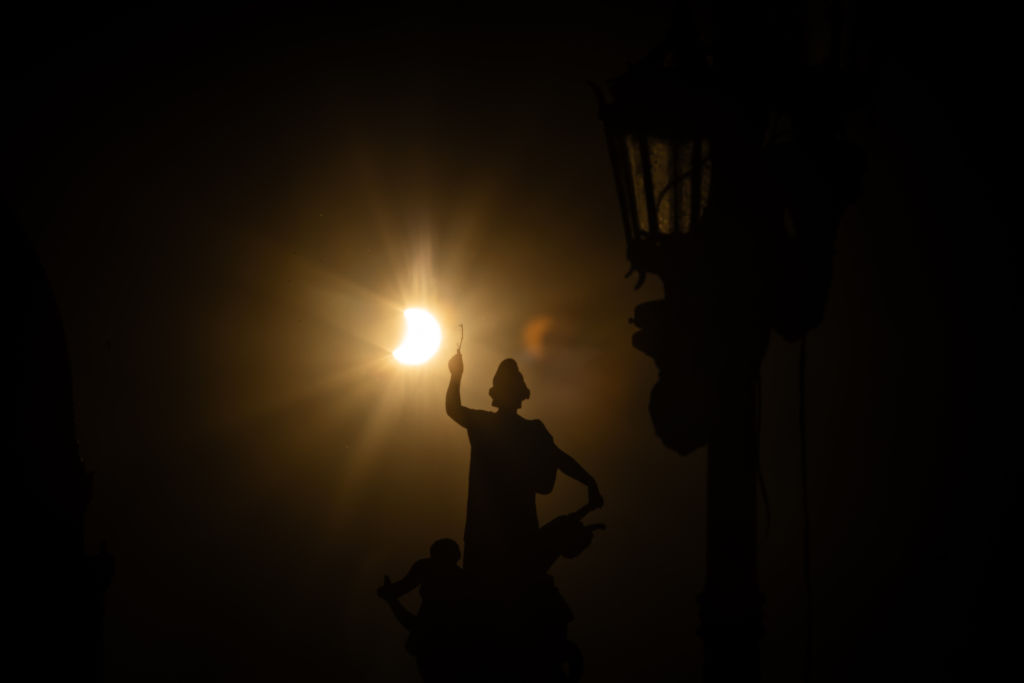
Like Dury and Carter, many people flocked to Rapa Nui for this year's annular solar eclipse. In this photograph from Jonathan Martins, we can see residents and tourists waiting for the annular solar eclipse and the famous "ring of fire" phase.
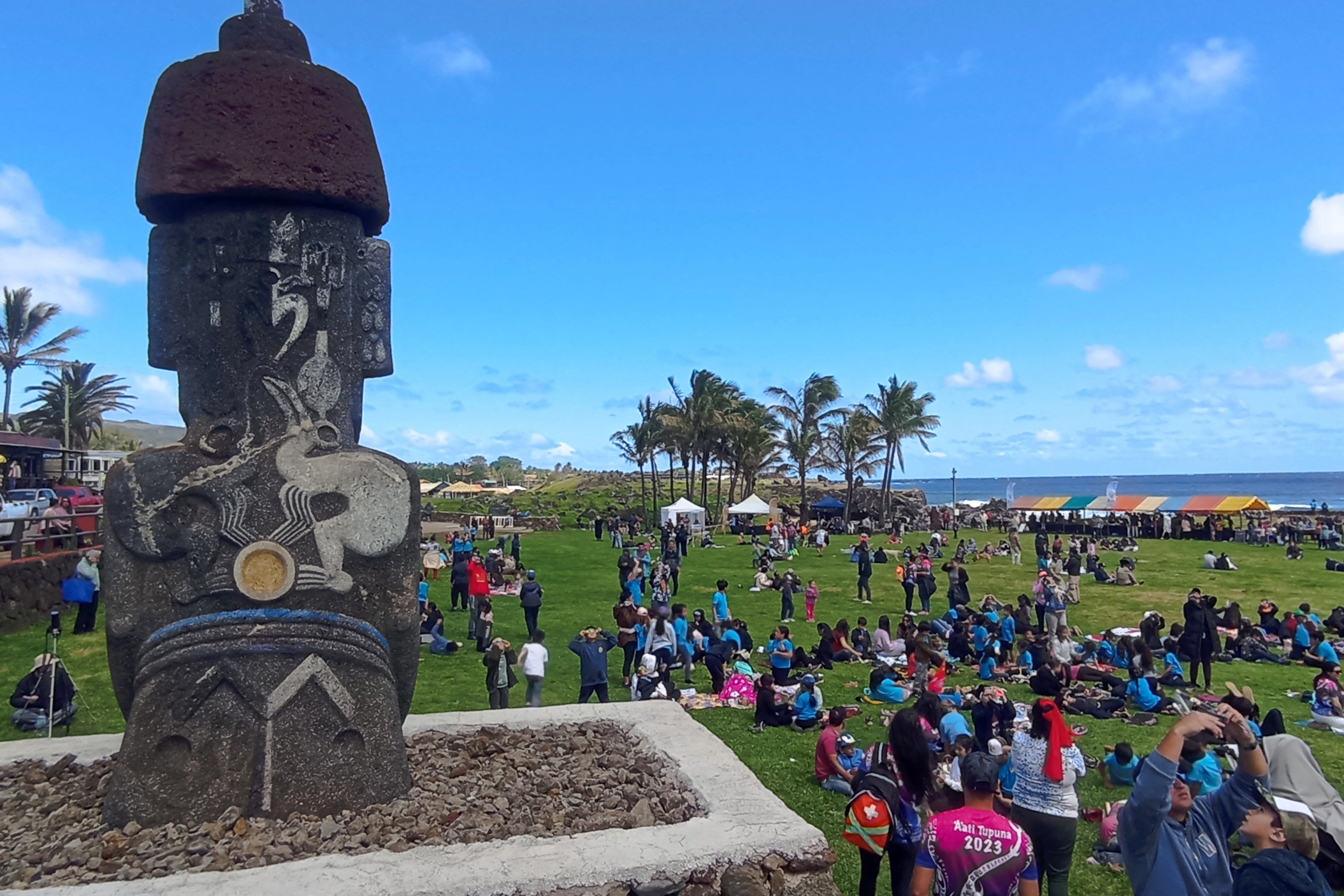
If these photos have inspired you to learn more about how to photograph a solar eclipse, or perhaps look into buying the best camera for astrophotography, you can check out our guides. There is enough time to hone your photography skills before the two partial solar eclipses that will happen in 2025.
But the eclipses on everybody's lips are the total solar eclipse in 2026 and the "eclipse of the century" in 2027. So, mark your calendars!
Join our Space Forums to keep talking space on the latest missions, night sky and more! And if you have a news tip, correction or comment, let us know at: community@space.com.

Daisy Dobrijevic joined Space.com in February 2022 having previously worked for our sister publication All About Space magazine as a staff writer. Before joining us, Daisy completed an editorial internship with the BBC Sky at Night Magazine and worked at the National Space Centre in Leicester, U.K., where she enjoyed communicating space science to the public. In 2021, Daisy completed a PhD in plant physiology and also holds a Master's in Environmental Science, she is currently based in Nottingham, U.K. Daisy is passionate about all things space, with a penchant for solar activity and space weather. She has a strong interest in astrotourism and loves nothing more than a good northern lights chase!









